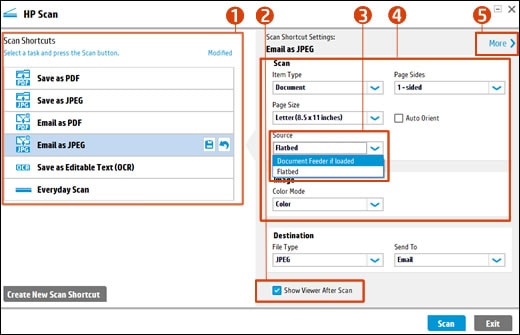
System File Checker is a handy tool included with Windows that allows you scan for and restore corruptions in Windows system files (including those related to ScanToPCActivationApp.exe). If System File Checker finds a problem with your EXE or other critical system file, it will attempt to replace the problematic files automatically. For information on removing the Scan to PC Desktop add-ins from Microsoft Word, read the tips below. For more information, read the documentation or the Help Files. These add-ins provide integration between the Scan to PC Desktop applications and Microsoft Word. To remove the PDF Converter Add-in: Close all active applications. I understand that you are getting a message related to Scan to activation app, is that right? Kudos to you for trying to troubleshoot the issue on your own. Not to worry, I will be glad to assist you. Are you able to make a copy on the printer? The issue comes up if there any HP printer software is not responding correctly on your computer. HP driver for the HP Officejet Pro 8600 that allows you to scan from the printer to your computer over the network. This startup entry is started automatically from a Run, RunOnce, RunServices, or RunServicesOnce entry in the registry.%ProgramFiles% refers to the Program Files folder. Or Windows detected a hard drive problem. Scanning for hard drive errors. Hard drive scan helps to detect and resolve hard drive problems and system performance issues. After you close this alert you will be presented with another alert that pretends to be for a program that will attempt to fix your hard drive.
When you’re tired of fiddling with your scanner’s built-in software, turn to the simple scanning app bundled with Windows 10. Dubbed simply Scan, the new app doesn’t work with older scanners, unfortunately. But if your scanner is relatively new, the Scan app is a refreshing change from complicated scanner menus.
Setting up a new scanner for the first time? Be sure to unlock it by sliding a lever or turning a dial on the scanner to the unlock position. That lock protects the scanner during shipping, but you must turn it off before use.
Follow these steps to scan something into your computer:
From the Start menu, open the Scan app.
If you don’tspot the Scan app on the Start menu, click the words All Apps in the Start menu’s bottom-left corner. The Start menu lists all of its apps alphabetically.
Click the Scan app, and the Scan app appears on the screen. If it complains that your scanner isn’t connected, make sure you’ve connected the USB cord between your computer and the scanner and that the scanner is turned on.
If your scanner’s plugged in and turned on, the scan app lists your scanner’s name, shown here, and the file type used for saving your files. (The PNG file type is widely accepted by most programs.)
Click the Show More link for additional options and click Preview to test a scan.If the app doesn’t recognize your scanner, your scanner is too old. You’re stuck with your scanner’s bundled software — if it works — or, unfortunately, buying a new scanner.
(Optional) To change the settings, click the Show More link.
The app’s default settings work fine for most jobs. The Show More link offers these options for specific types of scans:
Color mode: Choose Color for color items, such as photos and glossy magazine pages. Choose Grayscale for nearly everything else and choose Black and White only for line drawings or black-and-white clip art.
Resolution (DPI): For most work, the default 300 works fine. Higher resolution scans (larger numbers) bring more detail but consume more space, making them difficult to e-mail. Lower resolution scans show less detail but create smaller file sizes. You may need to experiment to find the settings that meet your needs.
Save File To: The Scan app creates a Scan folder in your PC’s Pictures folder, where it stores your newly scanned images. If desired, you can change the Scan folder’s name or even create a different folder for each scanning session.
Click the Preview button to make sure your scan appears correct.
Click the Preview icon, and the Scan app makes a first pass, letting you preview a scan made with your chosen settings.
If the preview doesn’t look right, make sure you’ve made the right choice for your job in Color Mode, described in the preceding step. If the preview shows a blank white page, make sure you’ve unlocked the scanner as described in the scanner’s bundled instruction sheets.
If you’re scanning a smaller item that doesn’t fill the entire scanner bed, look for the circle markers in each corner of the preview scan. Drag each circle inward to surround the area you want to copy.
Click the Scan button. When the scan finishes, click the View button to see your scan.
The Scan app scans your image with the settings you’ve chosen in the previous steps and then saves your image in your Pictures folder’s Scan folder.
The Scan app works well for fast, easy scans. But because it relies on the simple, built-in Windows software, your scanner’s built-in control buttons won’t work.

If you want the buttons to work or you need finer control over your scans, skip the Scan app, head for the desktop, and install your scanner’s bundled software. (On some scanner models, Windows Update installs the scanner’s bundled software automatically as soon as you plug in the scanner.)
Remove Scan To Pc Activation App Windows 10

Scan To Pc Desktop
Finally, for quick and dirty scans, just take a picture of the document with the camera built into your phone or tablet. That won’t work well for photos, but it’s a great way to keep track of receipts and invoices.
Comments are closed.